In his third adventure in Brazil, the Argentinian Jorge Luis Sampaoli was appointed as head coach of one of the biggest clubs in South America: CR Flamengo. They had a rough start to the season under the Portuguese manager Vítor Pereira, and due to his experience in South American football, Sampaoli was named as his replacement.
Currently placed fourth in the Brazilian Serie A, Flamengo are performing entirely under their fans’ expectations: winning 11, drawing six and losing six times. Such expectations are high not only because Flamengo won the Libertadores last season but also because they reached the 2019 FIFA Club World Cup final against the UEFA Champions League winner Jurgen Klopp‘s Liverpool FC.
That said, one of the most alarming stats for the “Mengão” is related to their defensive tactics, which is directly related to their classification. They’ve conceded 30 goals in 23 matches, giving them an average of 1.3 goals conceded per match — the sixth-worst defence in the league.
In this tactical analysis, we’ll try to unveil what are the main reasons for Flamengo’s unsuccessful defensive approach and the respective drop in the expectations to bring the league title back to Rio de Janeiro.
As we see it, there are two general reasons for this insufficient defensive performance: Flamengo’s exposure while attacking and their behaviour while defending.
Flamengo’s defensive approach
Under Sampaoli, Flamengo usually defend similarly as they attack; in other words, out of possession, they position in a 4-1-2-3 or a 4-1-4-1, depending on which phase of the game we’re into.
So, initially, during pressing, the wingers are deep and in the same offensive line as the centre-forward. The two central midfielders also are up on the field and seemed instructed to make an individual marking to the opposition’s midfielder.
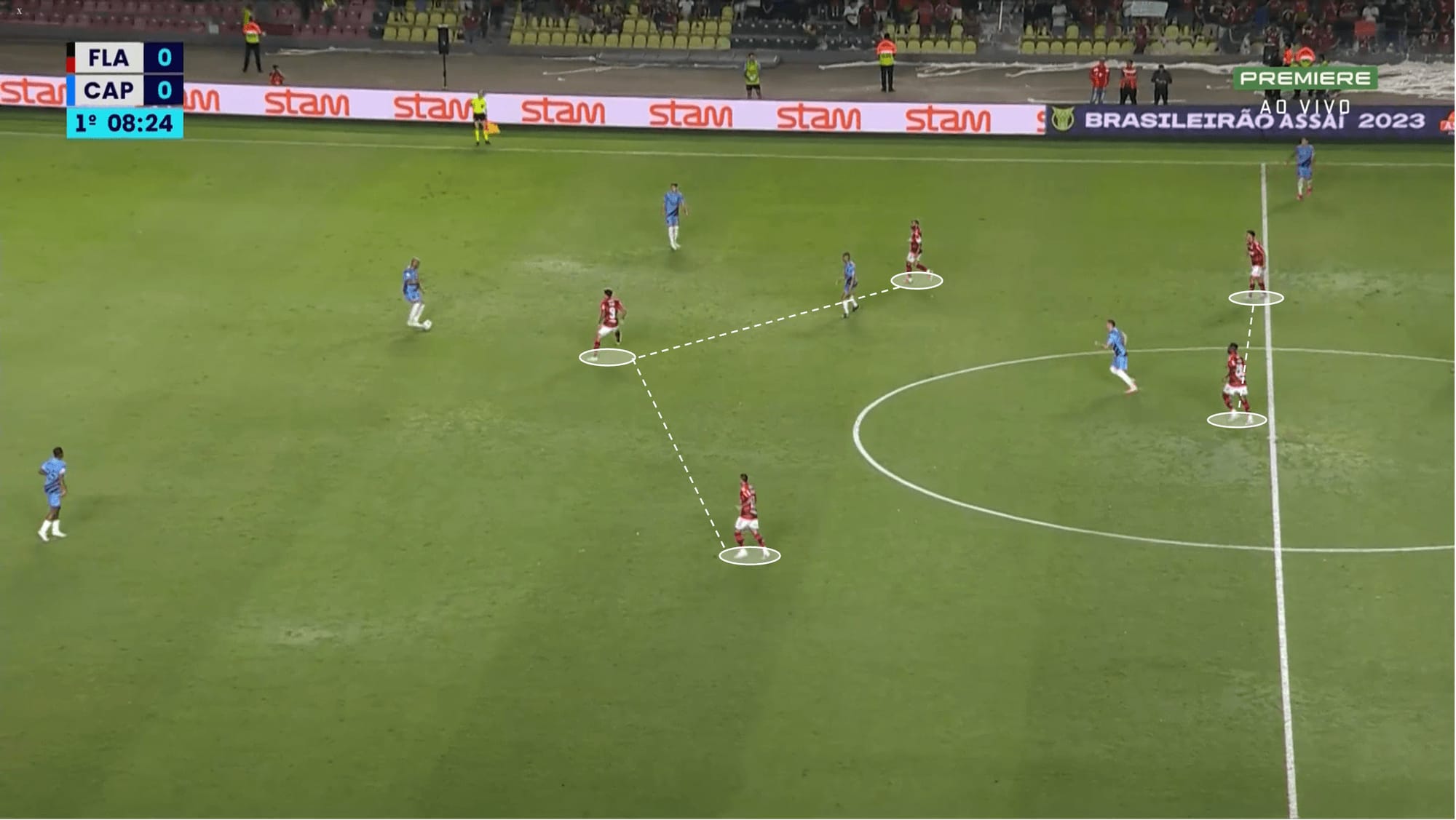
They are quite a high-intensity pressing team and, most of the time, successfully obstruct the opponent’s build-up. In fact, their Passes Per Defensive Action (PPDA) index is, on average, 8.18 against 12.73 from their opponents, which is a verifying stat of what was said previously.
However, the defensive problem happens after this first phase, when the first pressing line is broken. At this stage, the main issue is related to the disconnection between the attackers and the two central midfielders concerning the rest of the team.
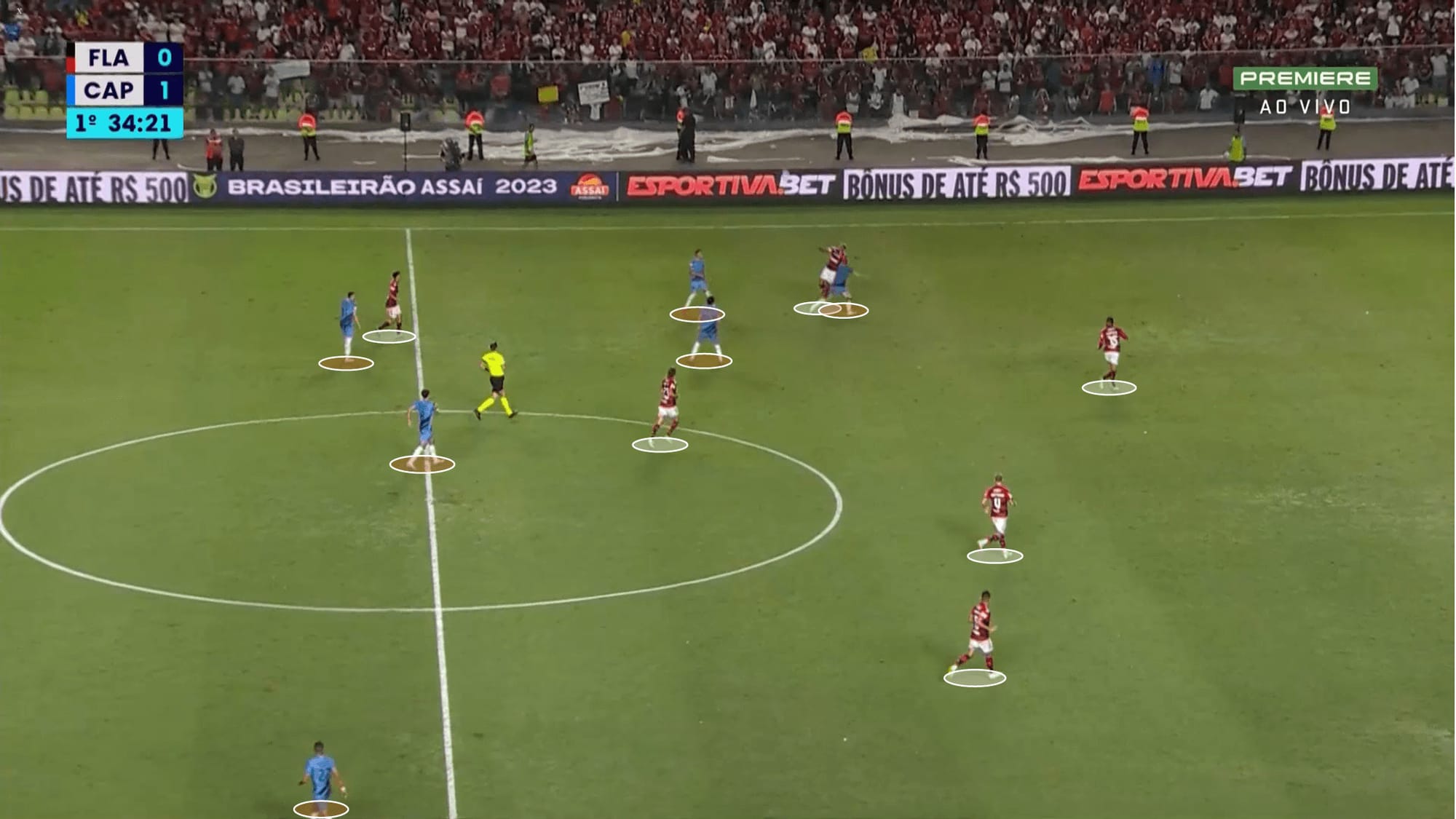
Flamengo also have two distinguished wingers due to their technical qualities and offensive contribution: Gabriel Barbosa and Everton Cebolinha, who had 43 direct goal contributions in 2023 during all competitions.
However, similar to what happened with Paris Saint-Germain, their offensive influence conditions their defensive process in a negative way. For instance, if the other team successfully built up, we often see a 1v1 or even a 2v1 dispute against the full-back because the attackers didn’t keep up with the team’s defensive block.
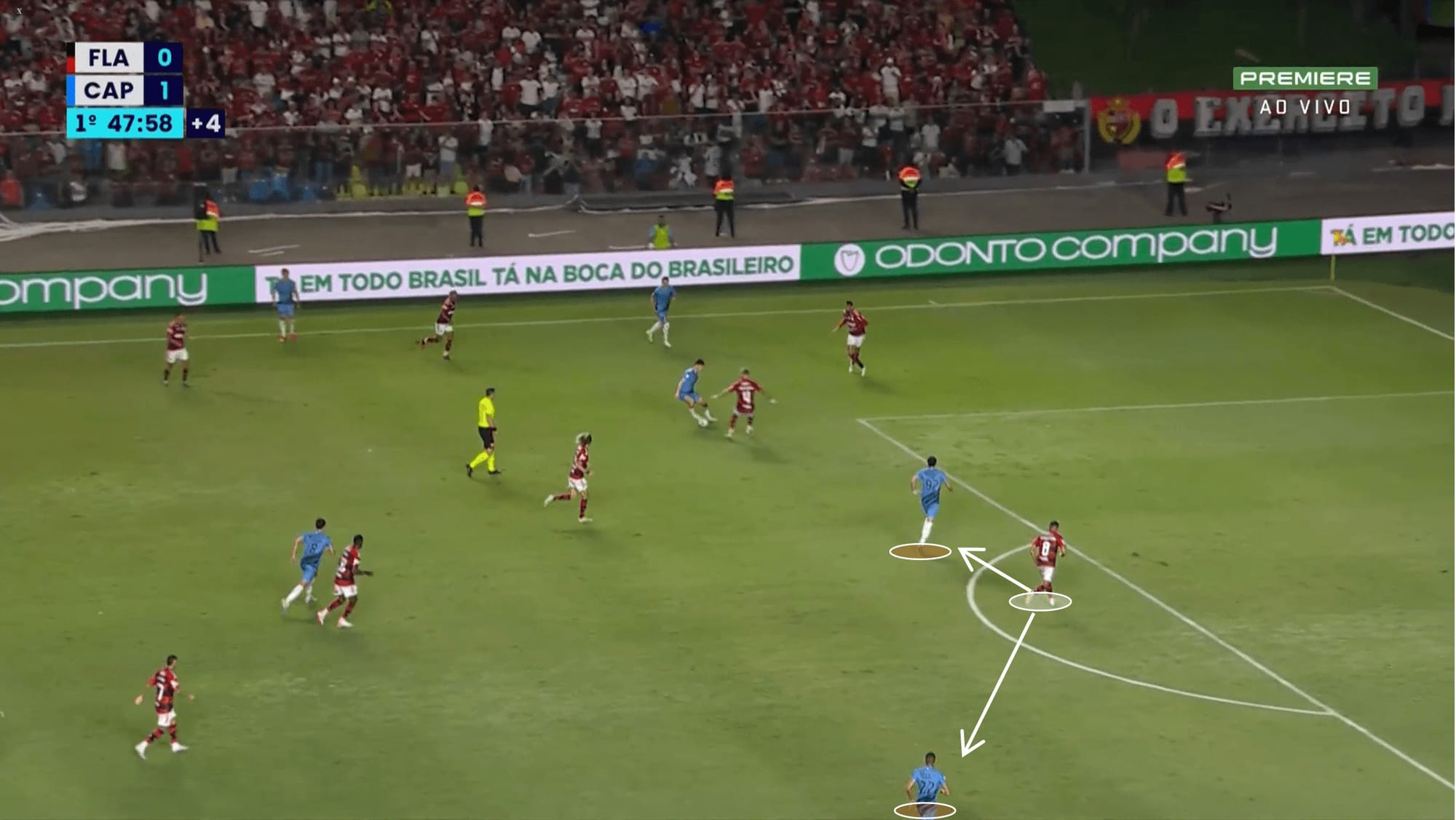
In addition, although intense, the attackers do not seem fully committed in their pressing. In some cases, a simple distraction leads to an unsuccessful obstruction to opponents’ build-up plan.
Below, we have a perfect example of this situation, where Gabigol takes too long to close inside, and the pivot receives the ball open and in a good position to give progression to their build-up.
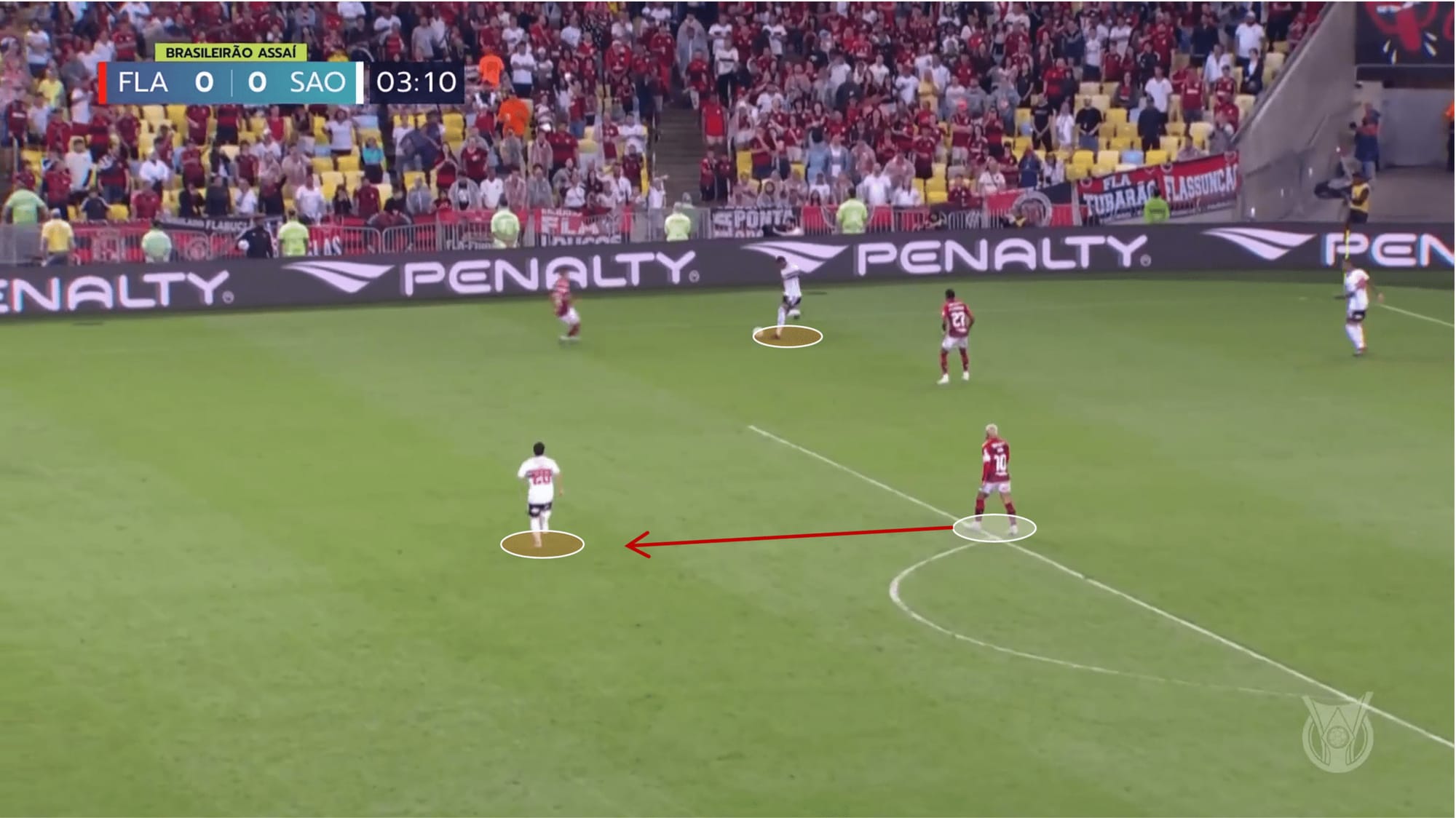
In the course of our analysis, we also found out that such disconnection is also visible in the midfield, where significant gaps between the lines are created. Most of the time, these gaps are formed right behind the backs of the winger and the central midfielder. This happens mainly due to the midfielder’s individual marking, which leaves the pivot in a numerical inferiority situation several times during the game.
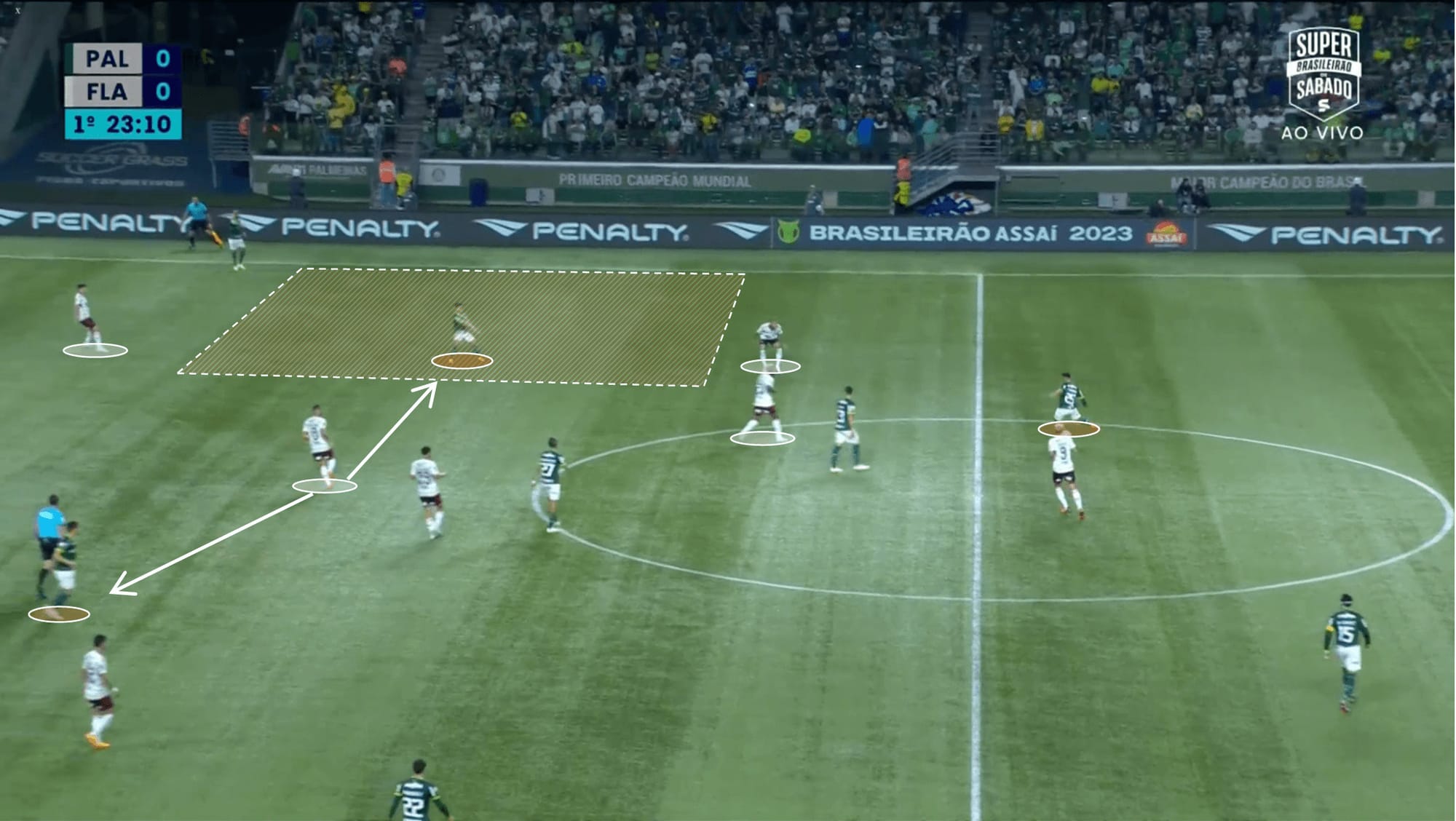
Sampaoli could reduce the distance between the three main defensive lines to avoid making this happen. This could maintain Flmanego’s high block pressing and help minimise these gaps. For instance, in the example above, if the defensive line was higher, the centre-back could be the player indicated to close that space.
This lack of defensive cohesion allows the opponent to receive the ball in an interior and dangerous position and decreases Flamengo’s chances of winning the second ball.
In addition, we found that despite their intense play and good reaction to the loss of possession, the “Mengão” are also often drawn to the ball, leaving big spaces for the opponents to explore. In the example below, we see three Flamengo players for just one of the opposition’s.
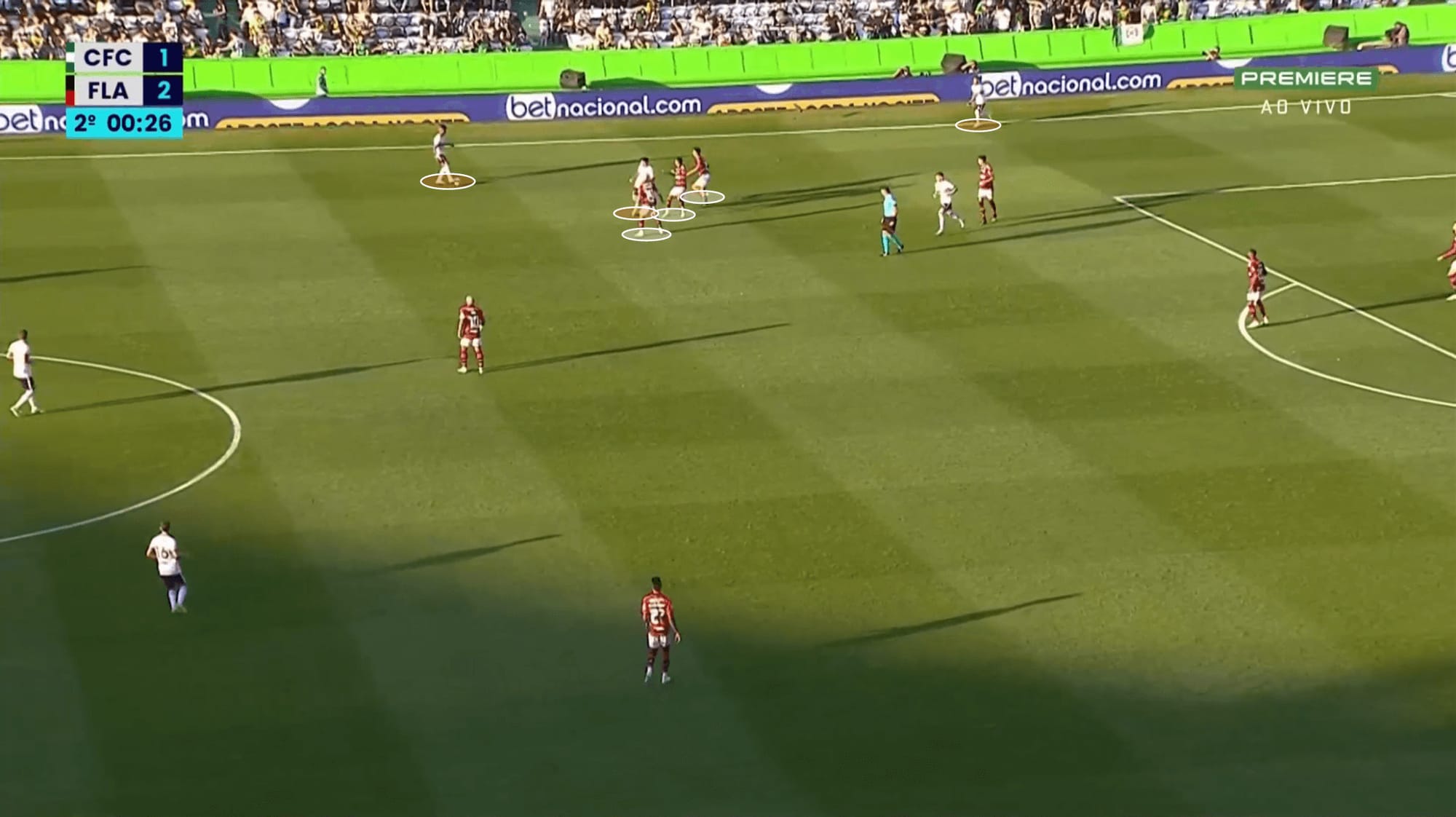
Yet, this is transversal in the grand part of South American teams, where their intensity and aggressiveness prevail over defensive organisation. However, this has some advantages, like the significant number of balls recovered right over the opponent’s half of the pitch.
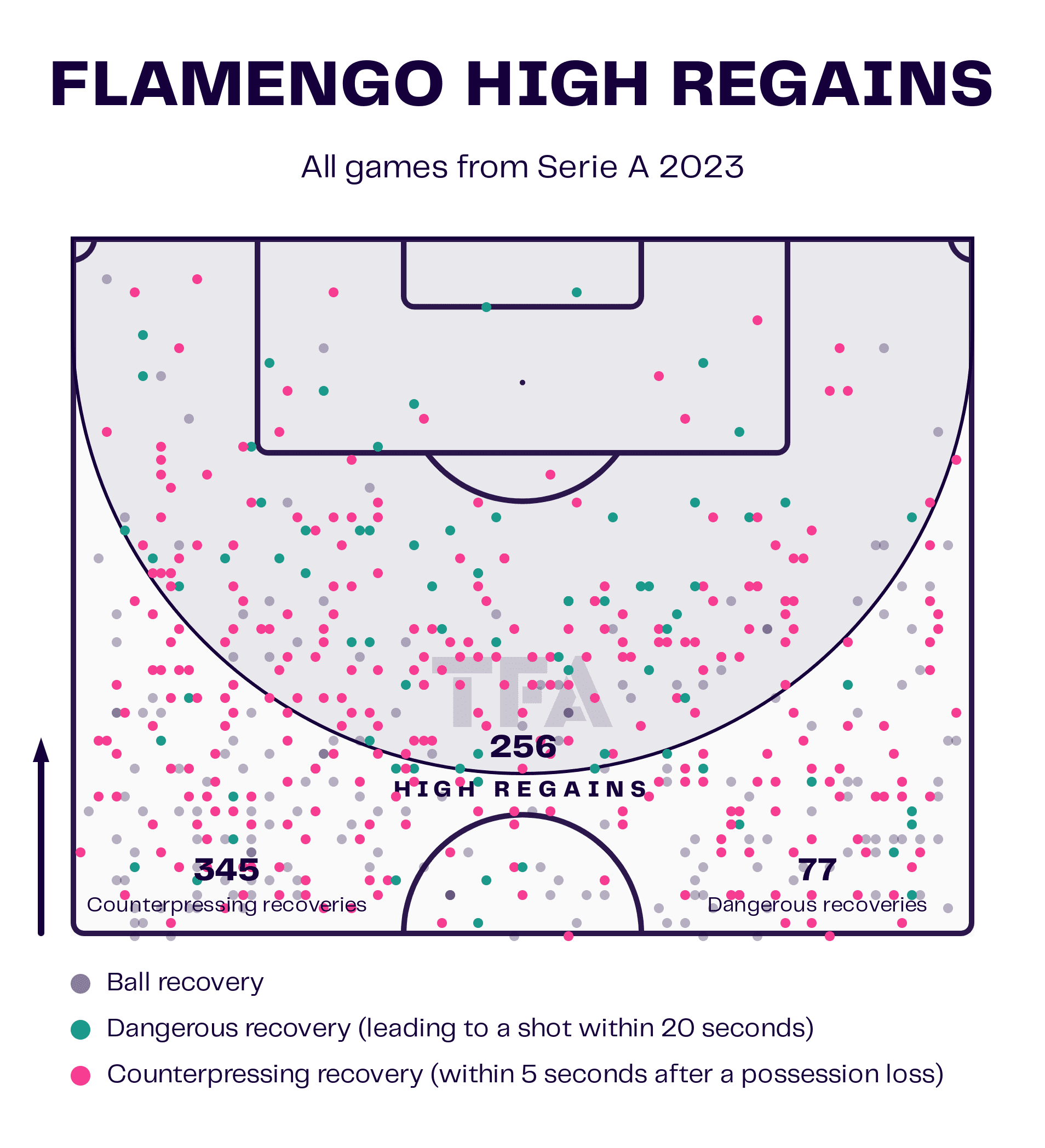
Finally, still concerning the defensive positioning, we found that there needs to be more precaution when the ball is about to get crossed by the wing. As a matter of fact, as discussed, the disconnection between the team affects its cohesion.
In the case below, the defensive midfielder does not fill the space inside the box correctly because he arrives late, forcing the centre-back to make a wrong defensive action.
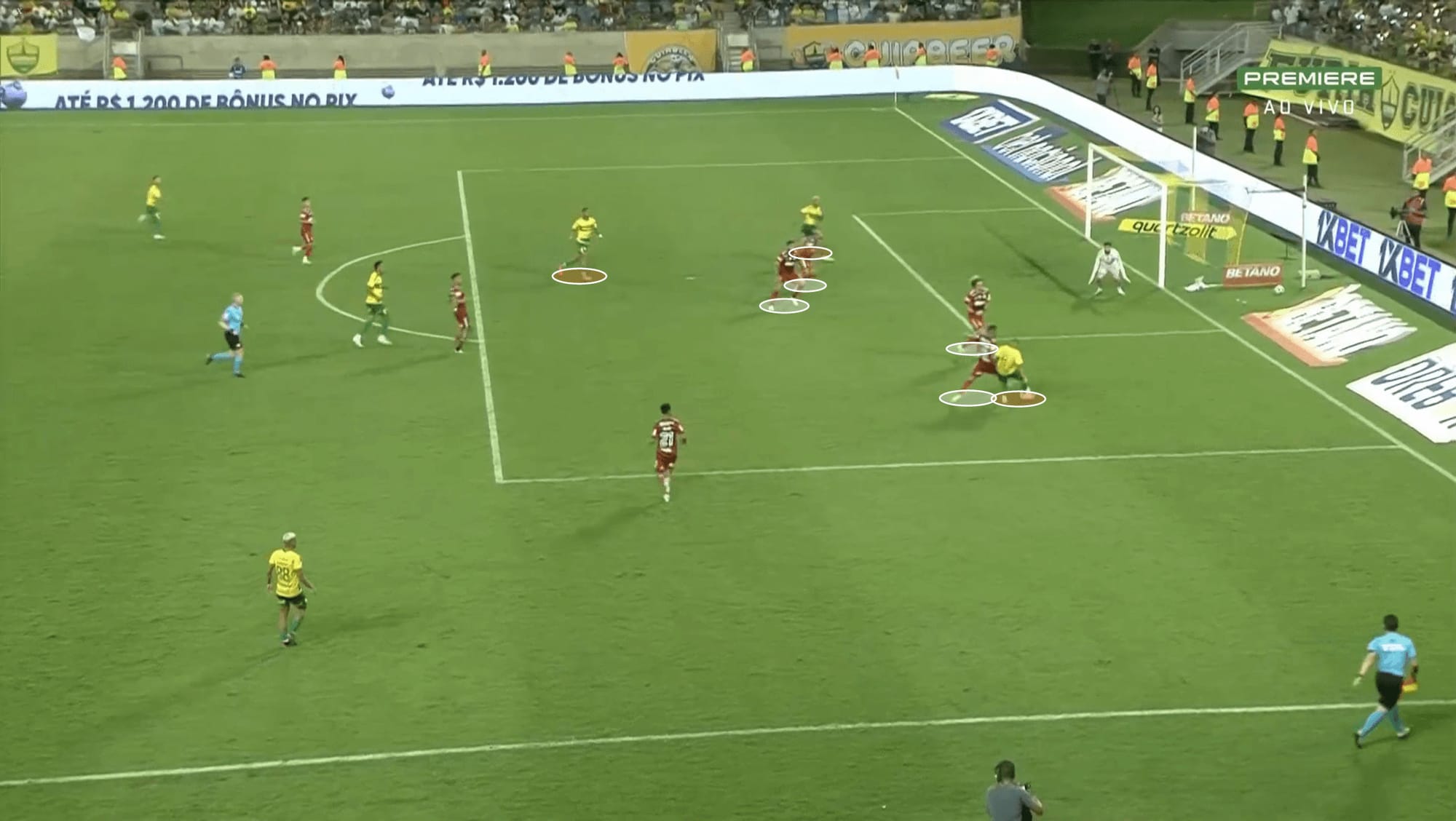
This often happens during counterattacks, and as we will see further, during possession, Flamengo players need to prepare themselves for the transition in case they miss it.
With that said, if Flamengo wants to reduce the number of goals conceded, they can’t leave critical positions to be filled inside their box.
We also perceived that some individual defensive mistakes were directly related to the goals conceded. For example, in the sequence below, a 3v3 situation, we see the centreback risking trying to disarm the ball carrier. This error in a competitive league typically costs a goal conceded, and this game was no different.
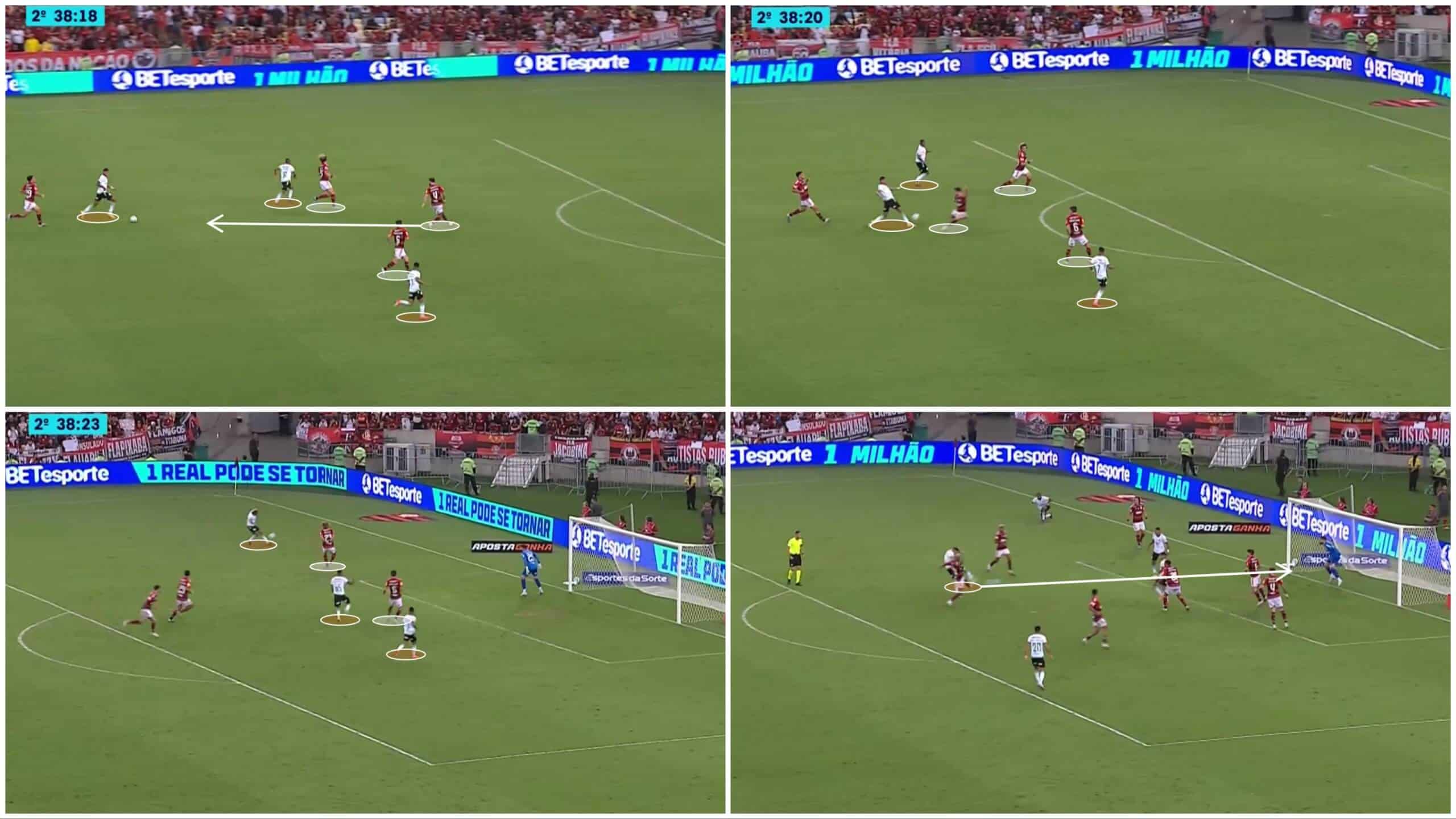
Although Sampaoli teams are known for their intensity and aggressiveness, we noted some passivity while defending. For example, in some situations, the defensive line revealed a lack of mobility, which directly influences depth control and the gaps created between the defensive and midfield lines, as we previously reported.
The example below shows that the two centre-backs and the left-back took too long to keep up with the right-back.
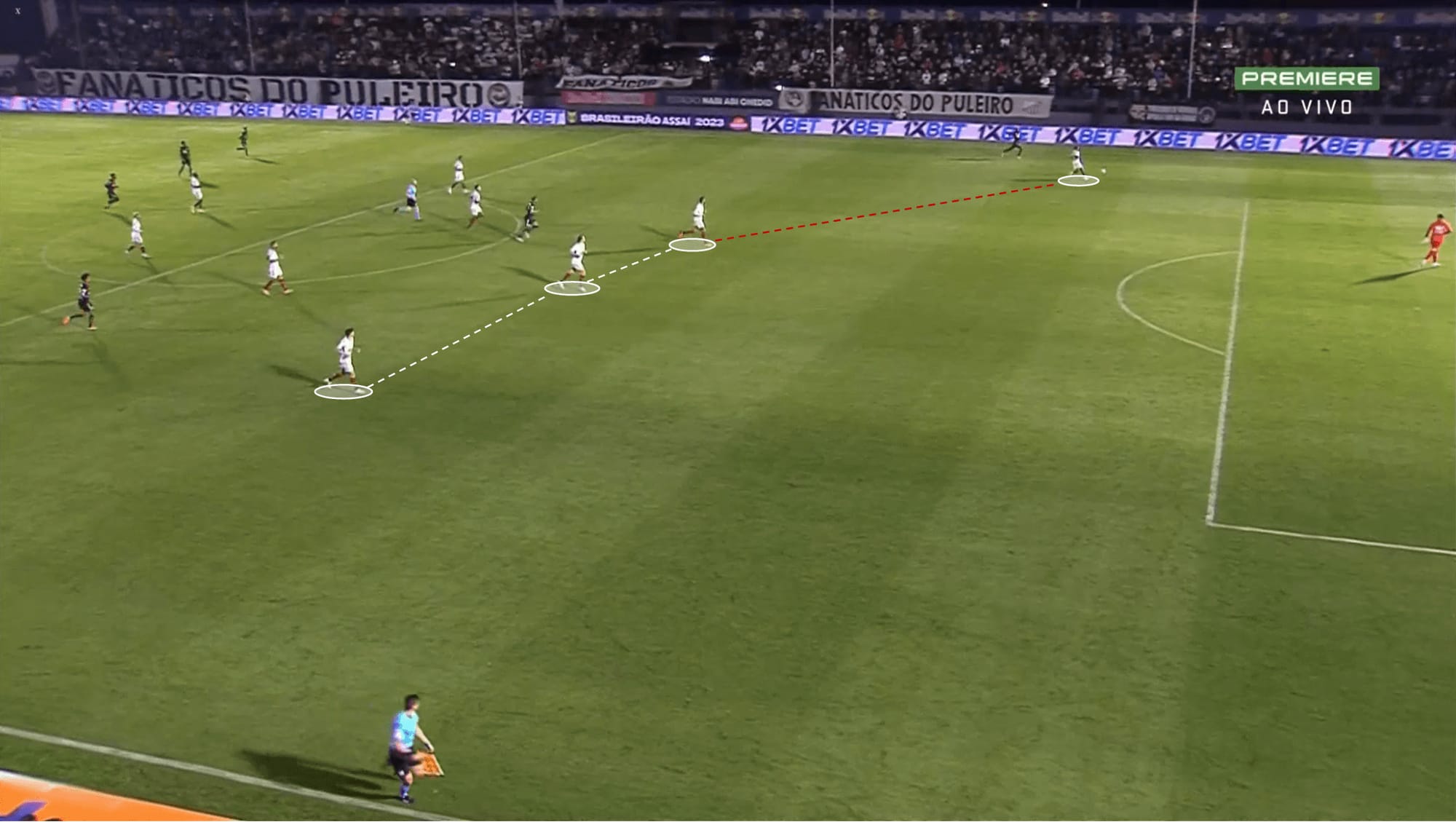
The passivity was also noticeable in defending individual actions from the opposition, wherein in numerical inferiority, the attacker successfully upset the defenders. As an example, we brought this play where six opponents surround the player, and even so, he successfully puts the ball inside the net.
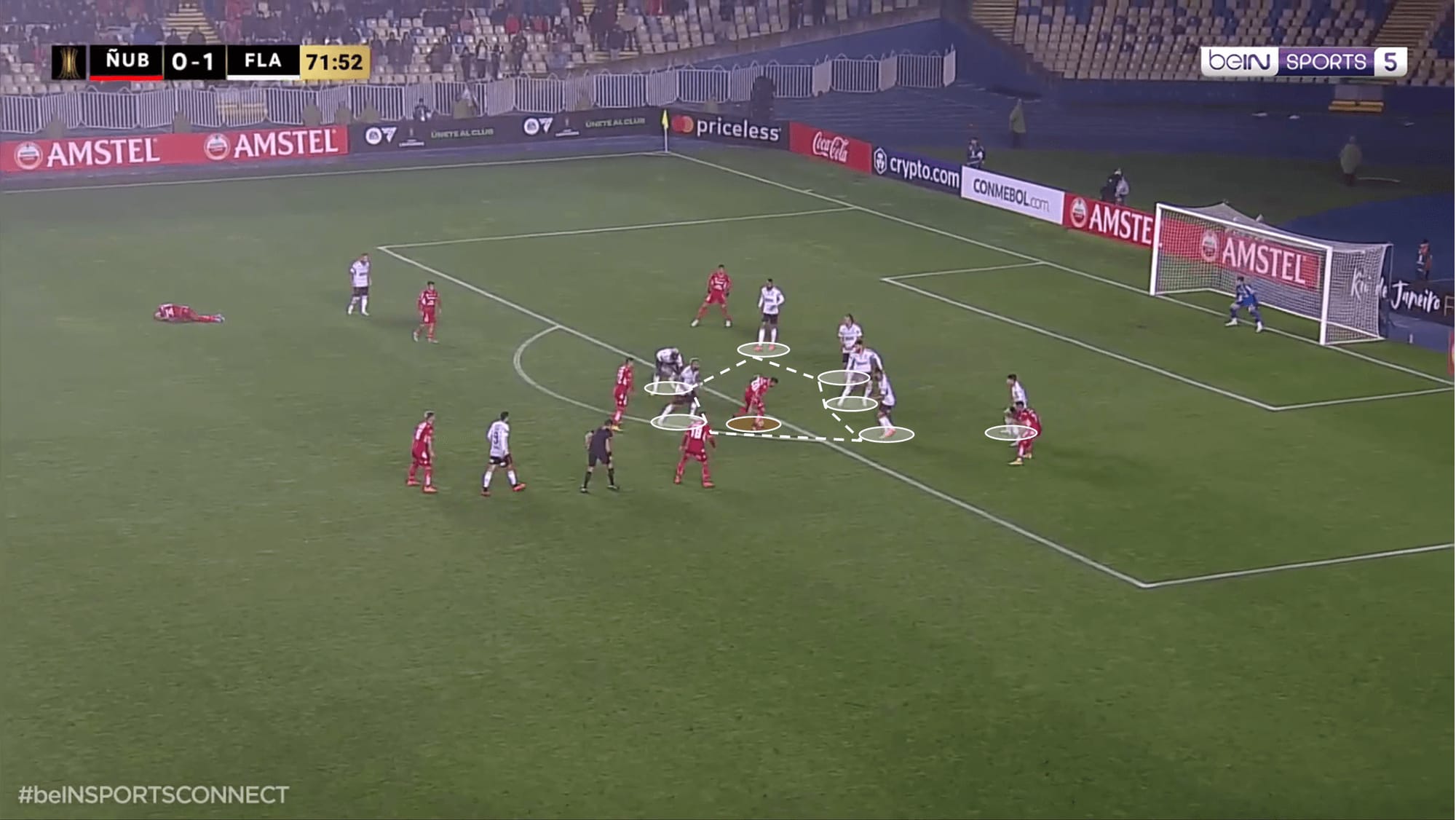
This is a sample of Flamengo’s passivity without the ball, yet it’s also visible during plays near the half of the pitch where they could’ve won far more duels.
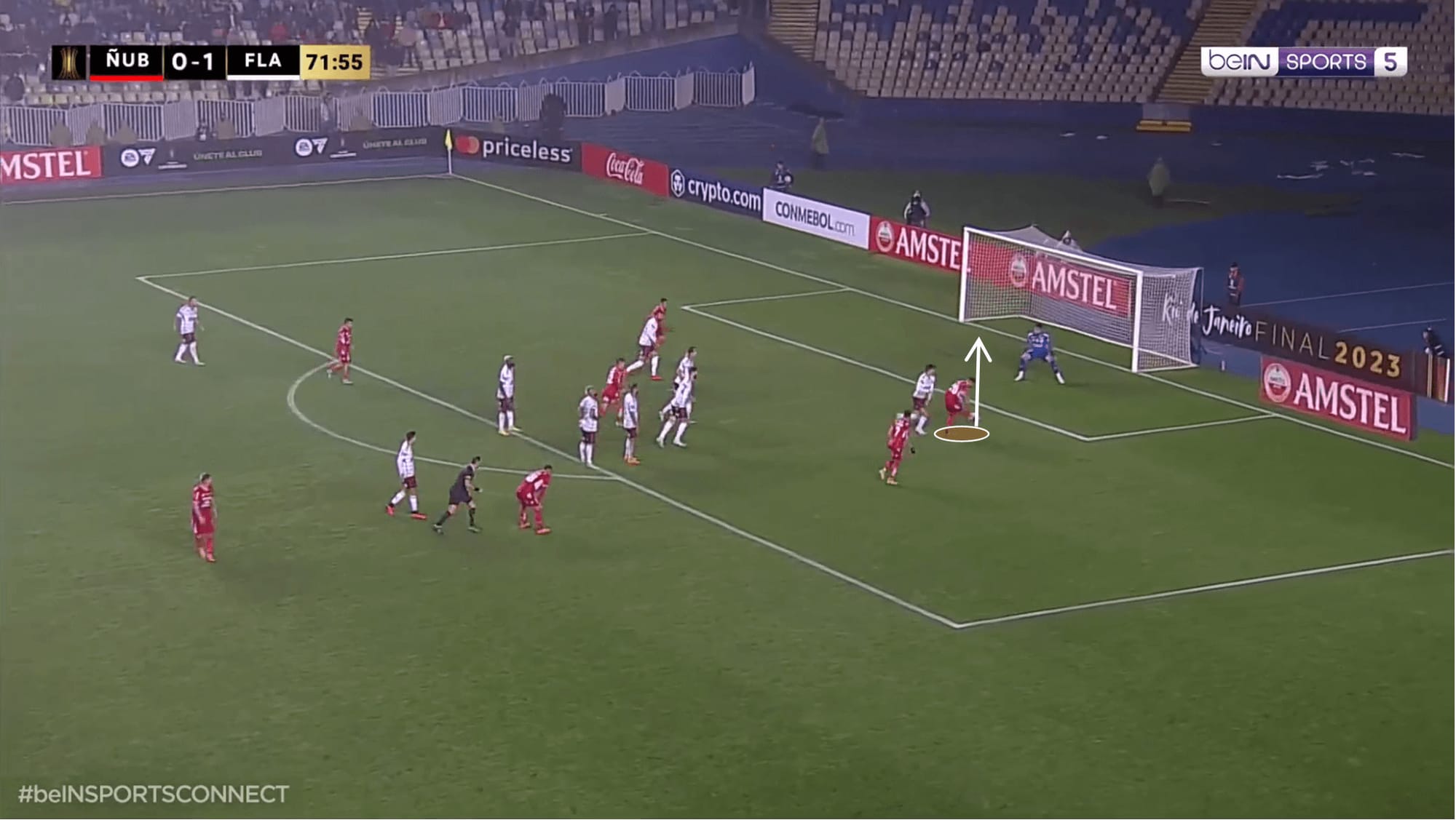
All of these aspects influence negatively Flamengo’s defensive consistency due to the number of opportunities conceded to their opponents.
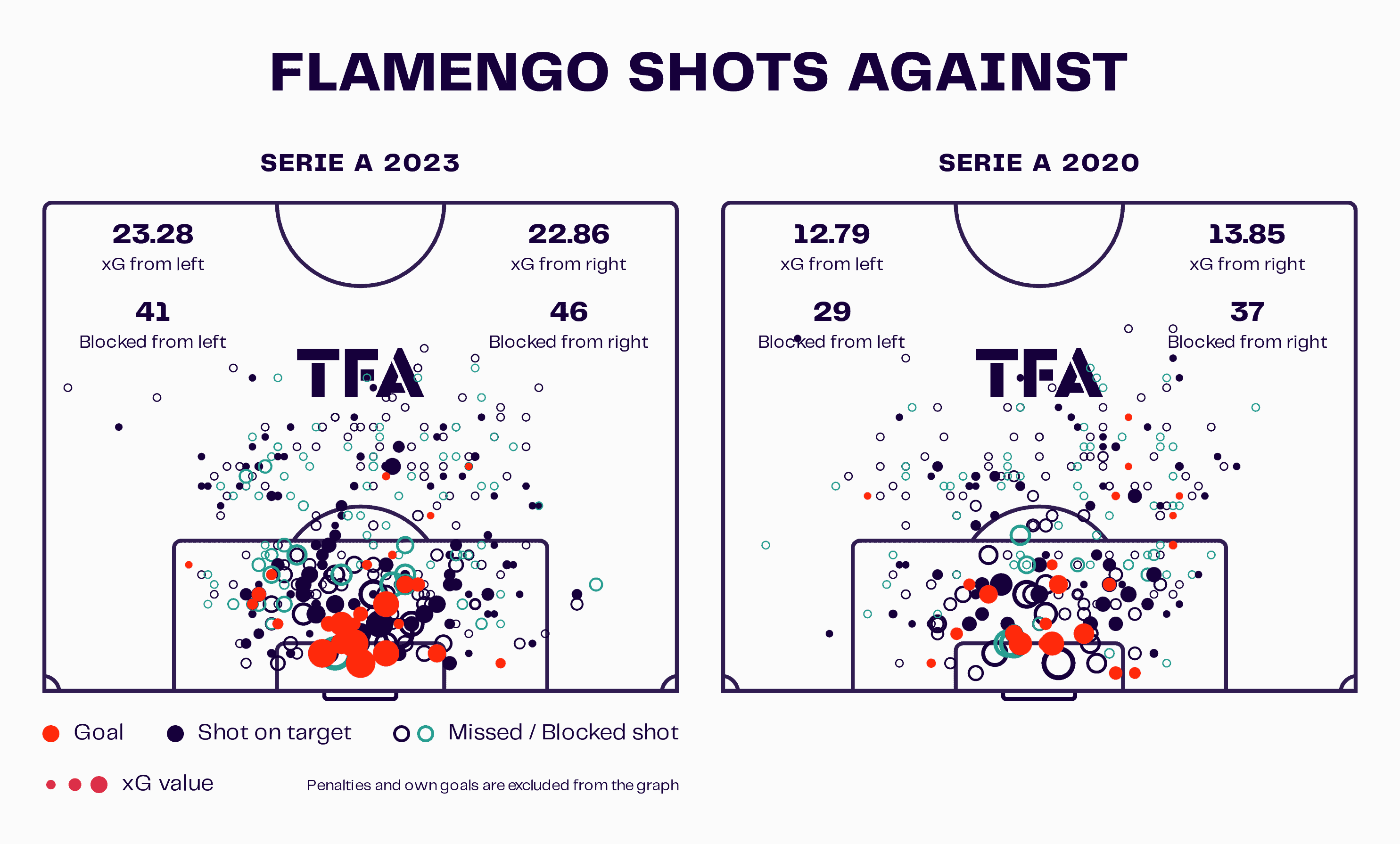
Above, we have a comparison of shots conceded during part of Flamengo’s golden era, where they were South American champions and vice-champions of the world. Although the Portuguese left in July to SL Benfica, the following coaches worked with the system created by him and in the 2020 Serie A edition, they only conceded 35 goals.
It is visible the difference between both periods; summing it all up, under Sampaoli, they have a total of 46.14 xGA, while in the 2020 season, they had 26.64 xGA. These are directly related to the number of goals conceded. With 14 games left, Sampaoli has only conceded five goals less than in the entire 2020 season.
Flamengo’s offensive exposure
On the ball, the “Mengão” is typically positioned in a 4-3-3, where Sampaoli can play with one or two defensive midfielders. The Argentinian head coach likes to have his team deep and projected on the pitch.
The full-backs normally use the width, and the central midfielders, wingers and centre-forward try to explore the reduced space between the lines since they play against teams who often close that gap.
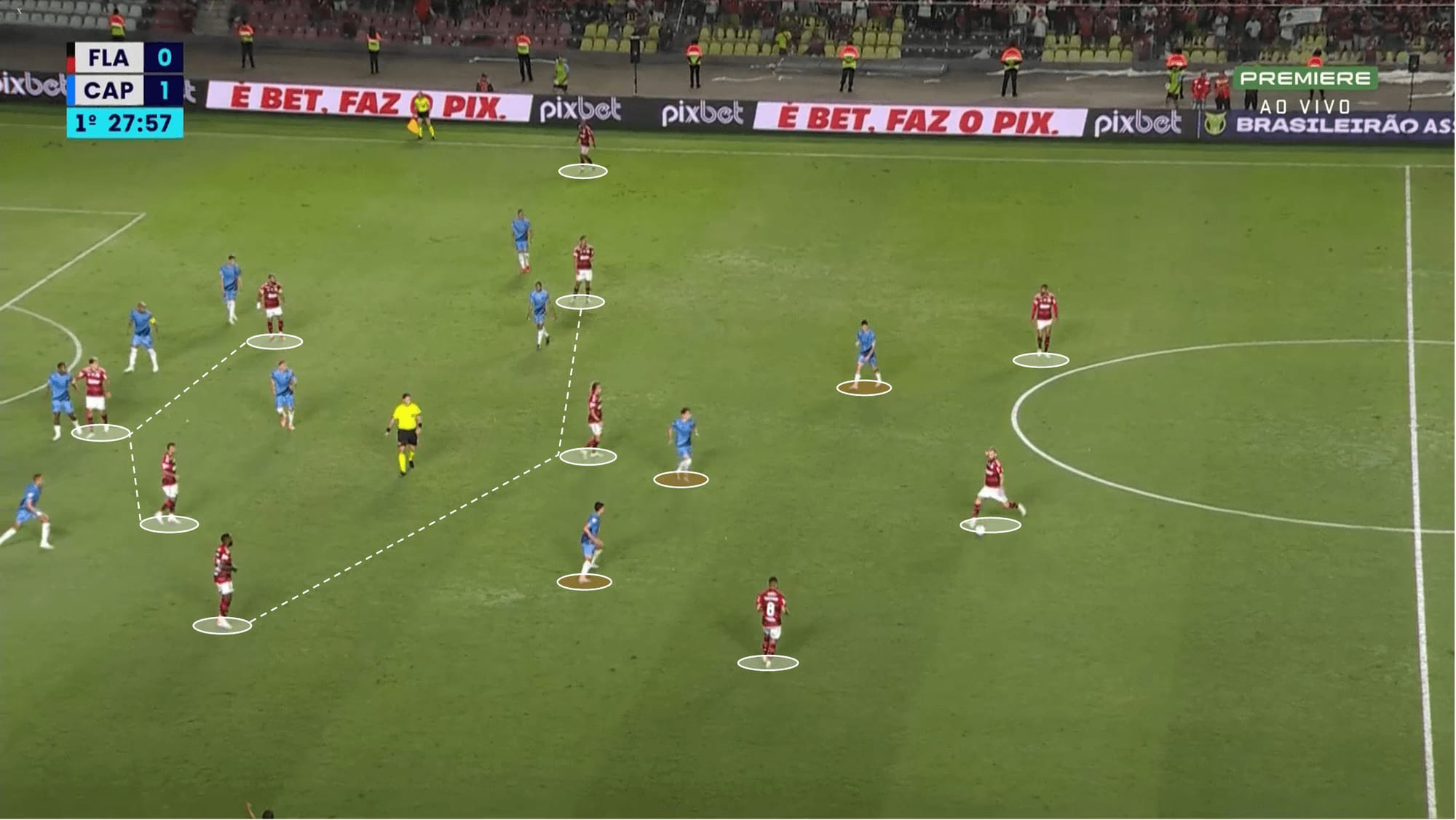
Yet, deep positioning does not always mean a correct space occupation by the players. For example, in some cases, the pivot was seen way too ahead, disregarding his defensive task.
The pivot is essential to close some gaps and increase the team’s solidity; in our view, his positioning is also vital in counterattack situations. In a league characterised by constant transitions, a previous assessment of the pivot’s positioning is extremely important to stop these threats.
The full-backs’ positioning is also critical to prevent these kinds of transitions, especially if the threat comes from the flank. Over time, new strategies have been developed in order to avoid counterattacks, for example, by positioning the full-backs in more interior zones of the pitch.
In a team that already is uncompensated in the defensive transition process due to the abstain of the attackers and some of the midfielders at this stage, the full-backs are essential to increase their defensive solidity.
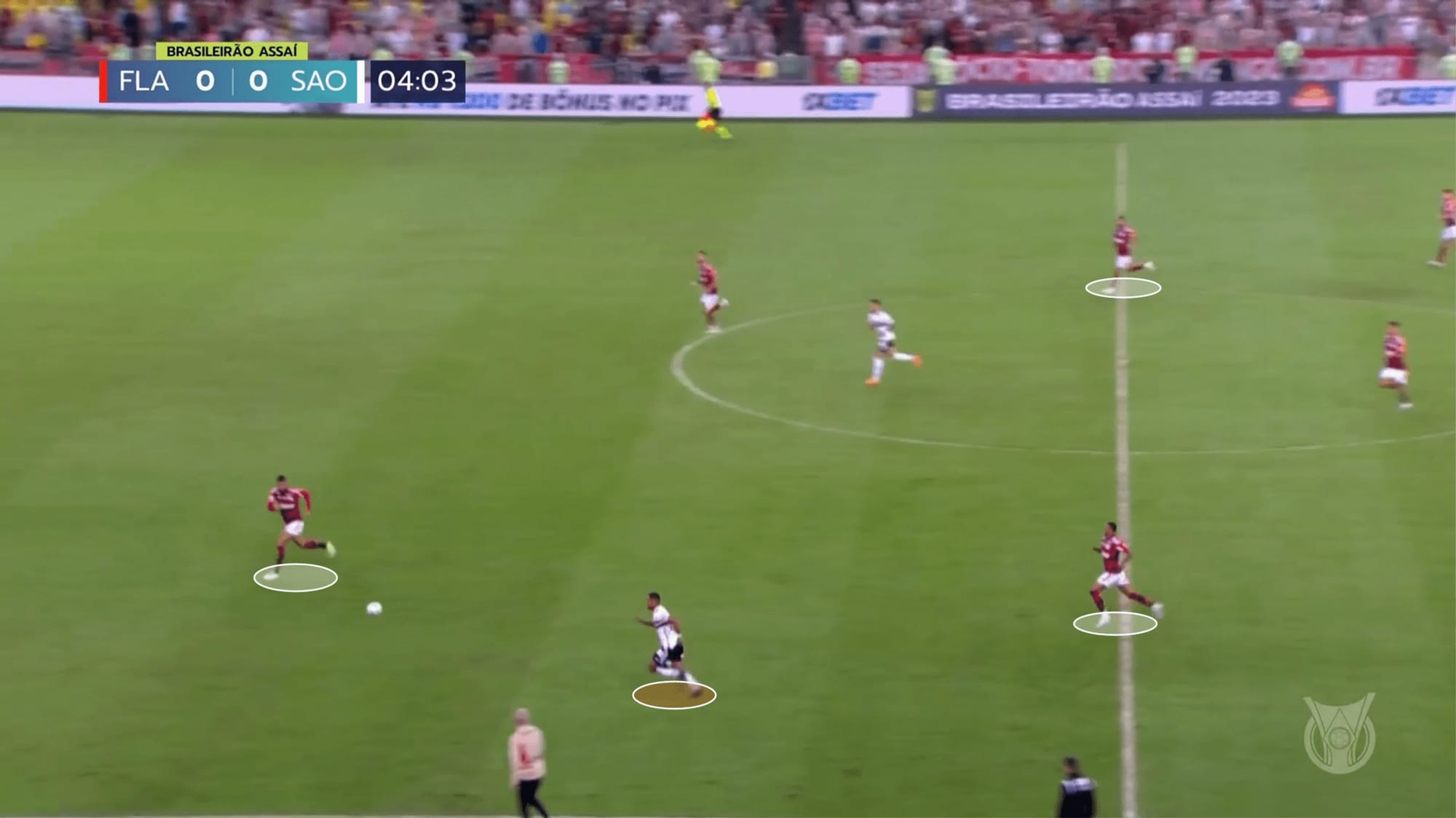
Jorge Sampaoli likes to build right from the back, and the centre-backs plus the pivot have crucial functions during such a process. However, during the “Mengão” performances, we find that these intervenents compromised in critical pitch zones due to poor decision-making and lack of technical skills.
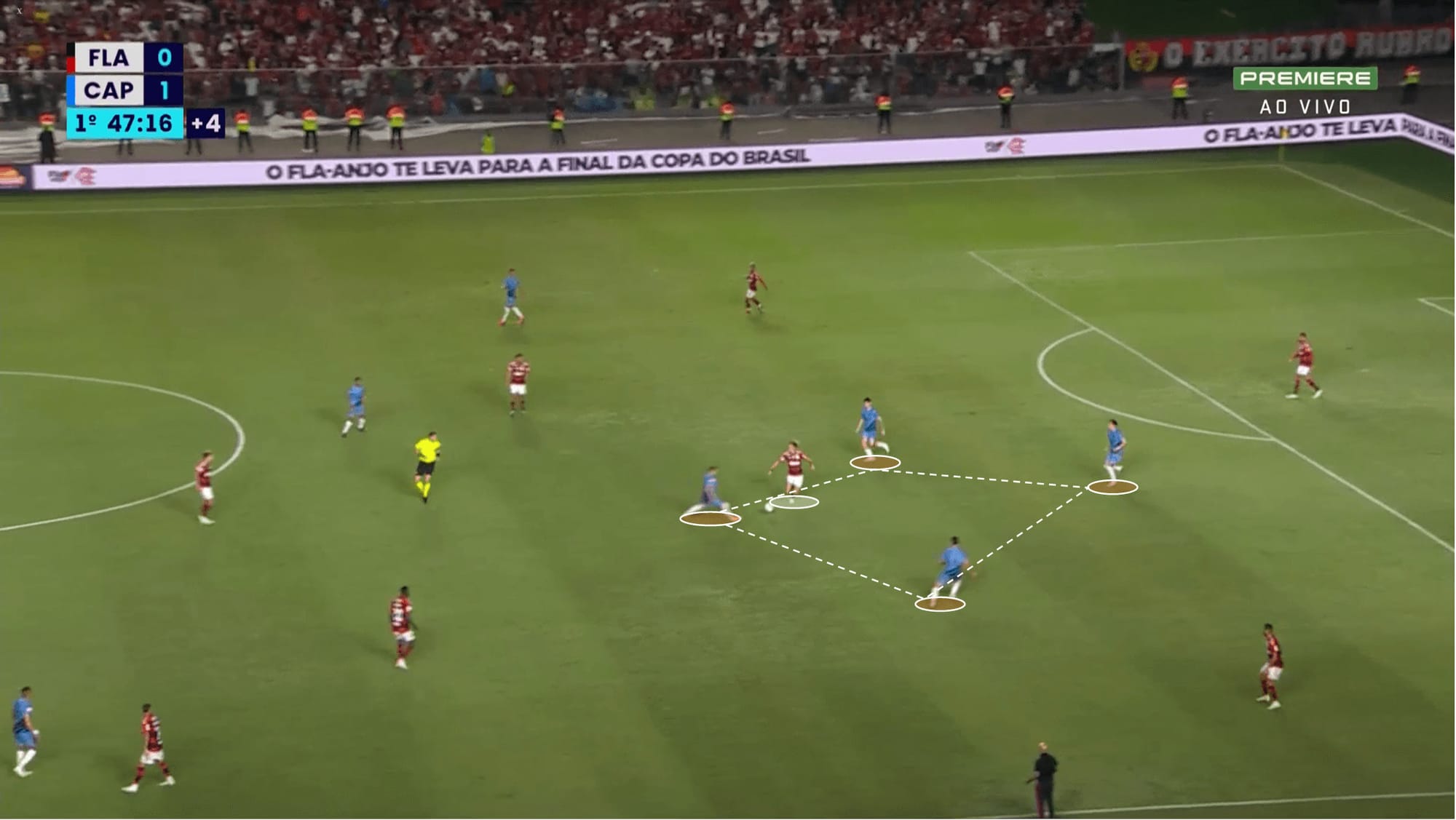
In the above example, a simple poor reception by David Luiz put the attackers in a 6v6 against their opponents. These situations are quite frequent during the game, as shown in the image below, where Flamengo’s defenders are facing 4v4.
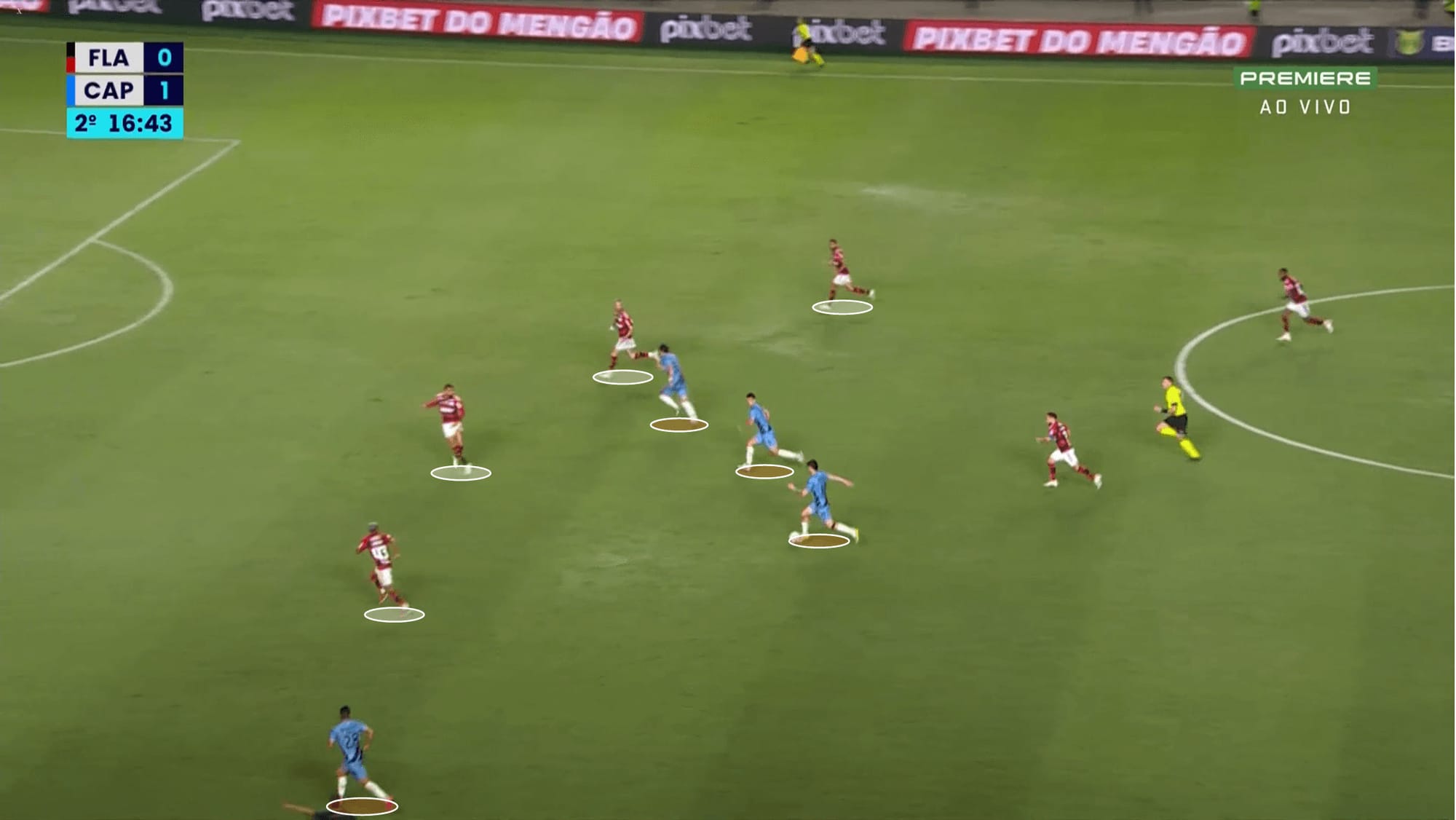
In any case, these numerical equality situations shouldn’t be normalised — the defending team should try to have at least one more element while out of possession.
In addition, another reason for these inefficiencies while building up can be related to the positioning of the full-backs. In fact, as we mentioned, Sampaoli likes to have his team deep on the field, even if the ball carrier is the centre-back or the goalkeeper.
Although this can be helpful because it forces the creation of gaps in the opponent’s game plan, it also can be counterproductive due to the lack of solutions in the initial phase.
For example, by positioning the full-backs deeper and utilising full-width, opponents will struggle harder to occupy all available spaces. Yet, as we can see below, the centre-back lost the ball due to the lack of solutions.
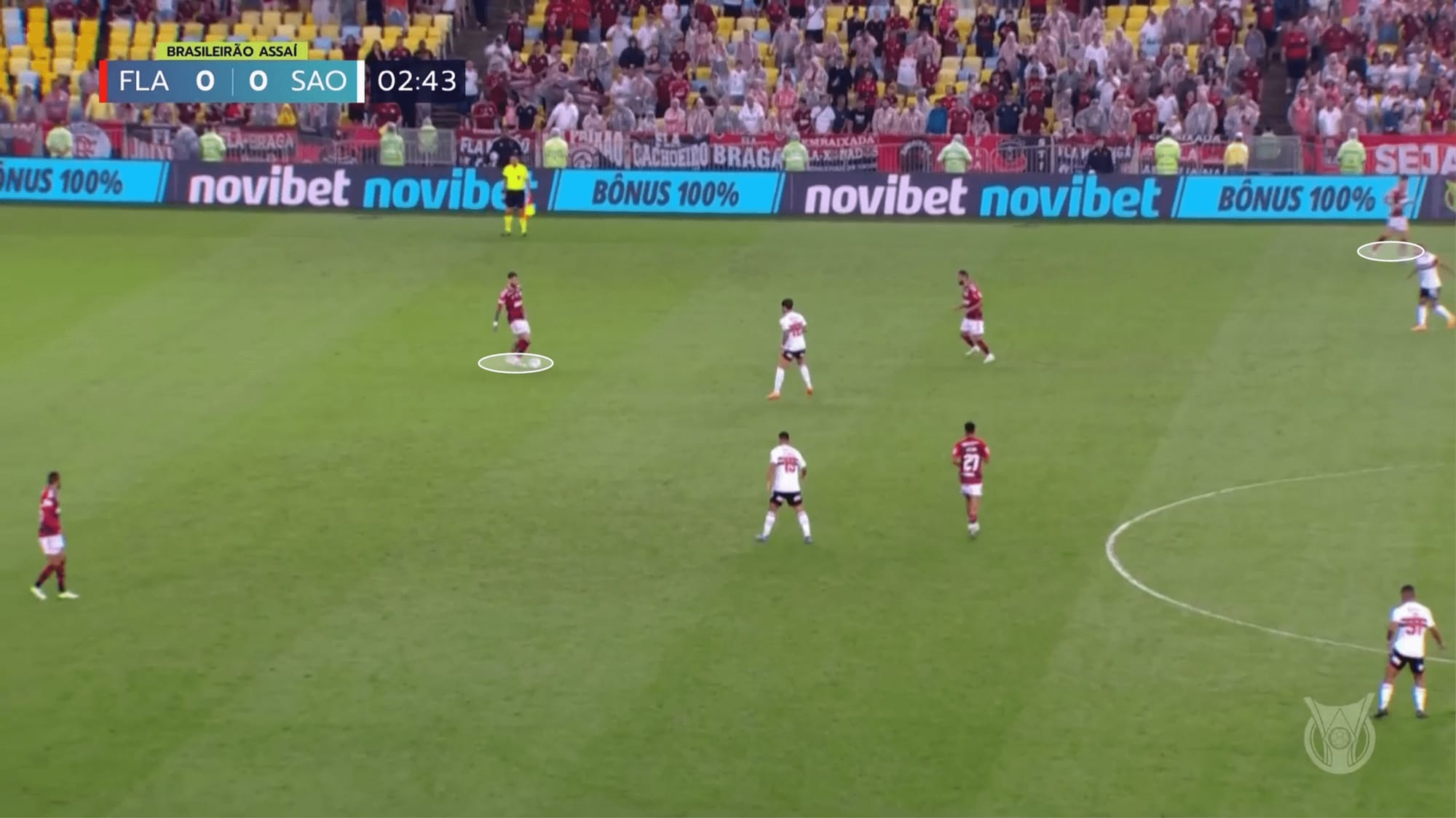
Conclusion
There are 14 games left in the 2023 Brazilian Championship. Although the odds of Flamengo recovering from the 12-point gap are low, they can improve their defensive record and finish in the best possible position.
To achieve a higher defensive solidity, in this scout report, we describe what, in our view, can be improved. For that, we divided it into two parts: which Flamengo can work on while defending and some in-possession actions directed to a possible defensive moment.
For the off-the-ball situations, we reviewed some issues, such as the disconnection of the different defensive blocks of Flamengo, which will create several gaps for the opposition to play. Furthermore, in our view, some passivity and individual mistakes also impacted Sampoli’s defensive setback.
On the other hand, Flamengo’s exposure to placing attackers and midfielders deep on the pitch neglects a defensive equilibrium, and it also contributed to their defensive fragmentation, leaving the backline in equality or even inferiority situations against the attackers. Finally, some bad decision-making during the build-up process also influenced their less successful results.





Comments